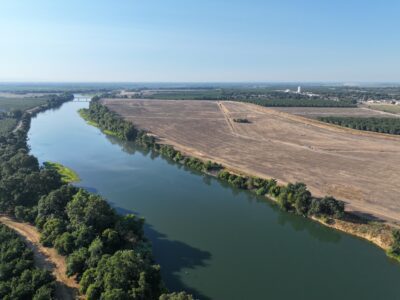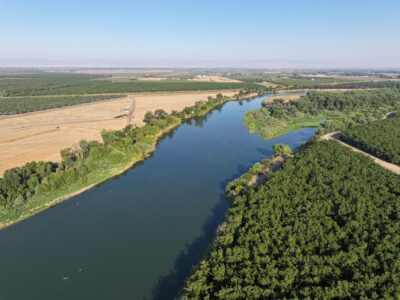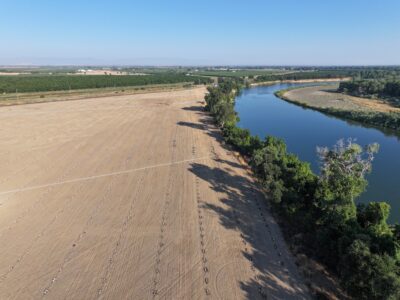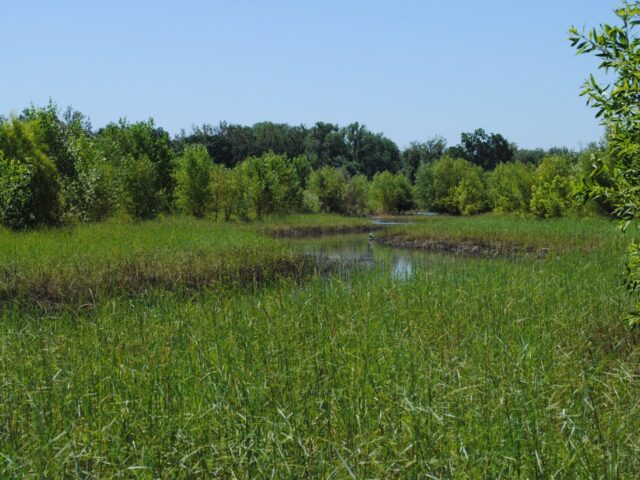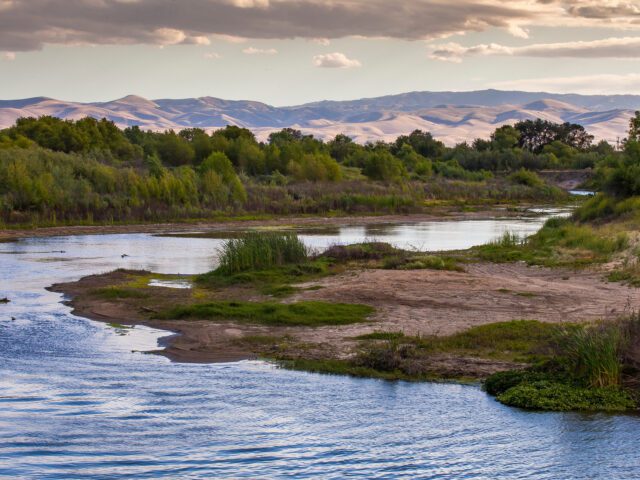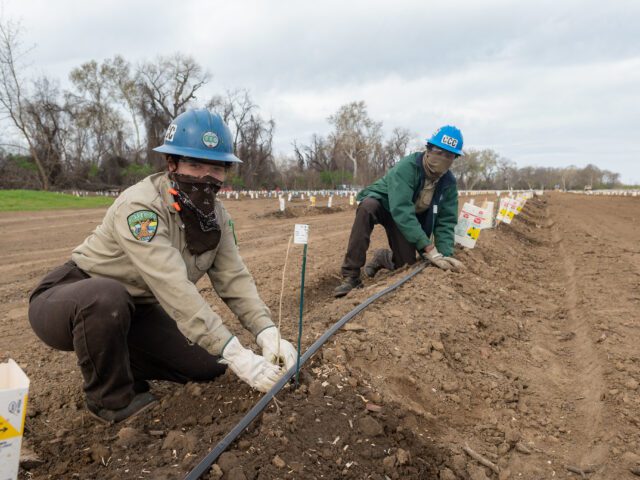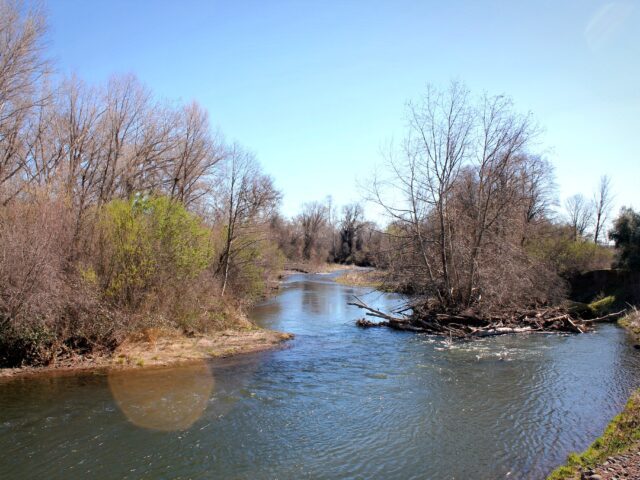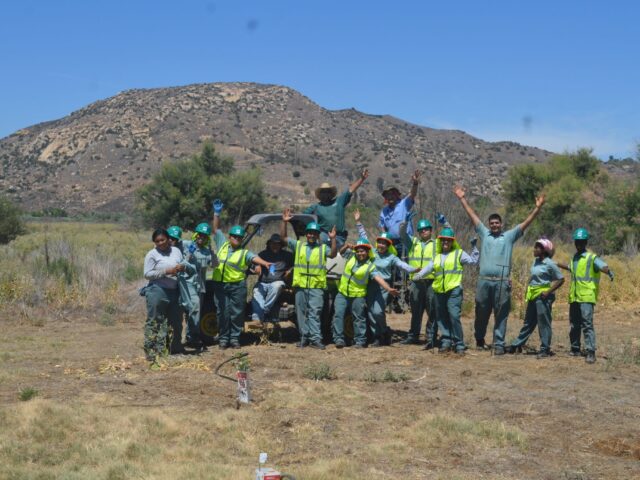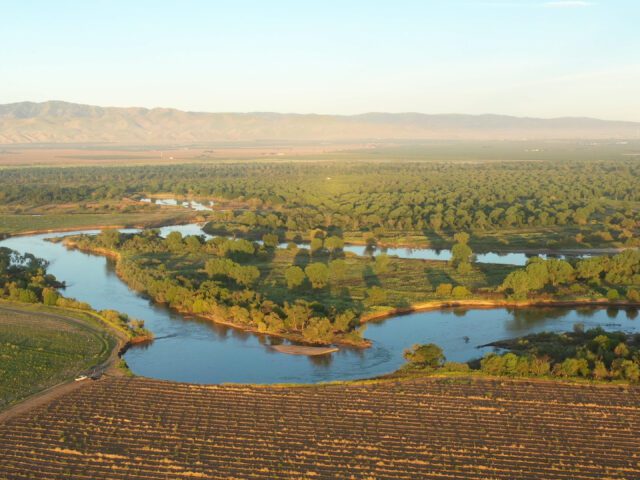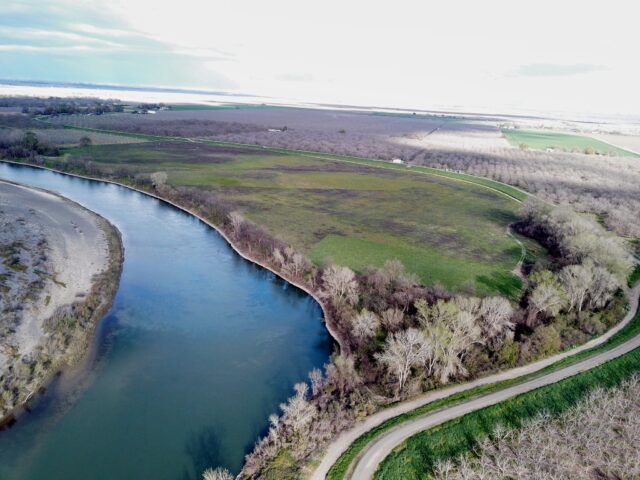Fighting Floods the Natural Way
Restoring floodplains is a cost-effective, natural solution to reduce the impacts of extreme flooding caused by climate change
As climate change intensifies, experts warn of weather whiplash, where intense periods of rainfall bookend extended hot and dry periods, causing severe droughts and extreme flooding and putting millions of people at risk.
In the coming decades, experts predict that climate-driven floods will be up to five times more severe and occur more frequently, especially in California’s Central Valley. Major floods like the historic 1997 Central Valley flood that caused $2 billion in damage are no longer once-in-a-lifetime events.
With more precipitation predicted to fall as rain instead of snow, and with thousands of miles of rivers straight jacked by levees, climate change will dramatically increase flood risk for many Central Valley communities.
This is especially true for San Joaquin Valley communities such as Stockton, where flooding will be the most severe and could rival the New Orleans flood of 2005 in the aftermath of Hurricane Katrina. Often, low-income neighborhoods are the most vulnerable to severe flood events due to historic lack of investment in levee and flood systems, adding a moral imperative the need for improved flood safety.
There’s one simple, cost-effective solution to combat this growing threat: floodplain restoration and reconnection.
THE PROBLEM
- As climate change intensifies, intense periods of rainfall will bookend extended hot and dry periods, causing severe droughts and extreme flooding and putting millions of people at risk
- Experts predict that climate-driven floods will be up to five times more severe and occur more frequently, especially in California’s Central Valley
- Without investing in nature-based solutions, future floods could cause up to $1 trillion in damage and putting countless lives at risk
OUR SOLUTION
- Expanding and restoring the state’s riverways is a simple, cost-effective solution to combat California’s growing flood threat
- Restored floodplains allow flood waters to slow down, spread out and sink in to over-drafted groundwater aquifers, creating new water supply and providing other benefits like wildlife habitat for imperiled species
- We plan to double the number of restored floodplains across California by 2030
A Shared Vision
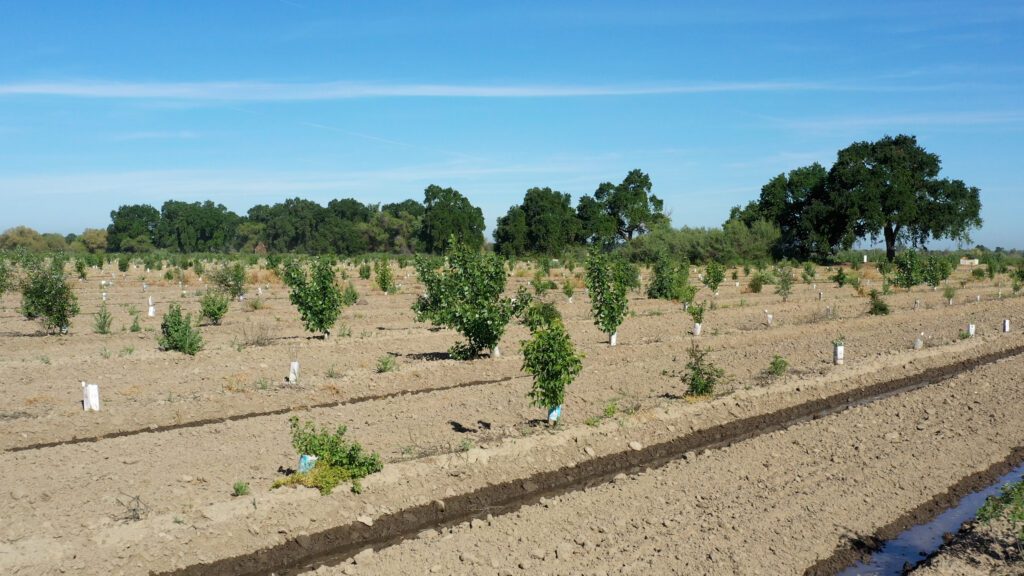
We must act now to prevent the worst of future flood damages, estimated to cost over $2 billion in any given year, and higher in the most severe flood years.
River Partners’ goal over the coming decades is to reconnect tens of thousands of acres of floodplains along major rivers statewide, prioritizing the Central Valley which will be hardest hit by future floods. Our restoration goal is bold. Yet, it’s what’s needed to move toward a more balanced approach to water management and ecosystem health that buffers communities from the worst that future climate-driven floods will bring while delivering other important benefits.
River Partners isn’t alone. Leading state and national conservation groups share our vision of bringing new life to riverways on a scale that’s never been achieved to grow a thriving future for communities and the environment.
Latest Flood News
Historic River Restoration Provides Hamilton City New Home for Flood Protection
The Little Levee That Could
Flood project grows on Hamilton City
Restored Floodplains: A Natural Solution for Safer Communities and A Healthier Planet

Restoring rivers’ natural processes with expanded floodplains and riparian habitat corridors provides flexible and resilient buffers from intensified drought and flooding. In addition to natural flood protection, restored floodplains sequester carbon faster and hold it longer than other types of forests, dramatically reducing emissions that cause climate change. Restored floodplains can lower flood risk and flood insurance cost, paying off with billions of dollars of ecosystem services in the long term.
River Partners completed the largest public-private floodplain restoration in California’s history, 2,100-acre Dos Rios Ranch Preserve, boosting flood safety for the nearby communities while also combating the effects of drought by recharging and purifying groundwater. Restored floodplain at Dos Rios Ranch can store up to 10,000 acre-feet of water during flood events which can reduce downstream flooding for approximately 10 miles and provide hours of additional response time for water managers and community members in Stockton and Manteca.
The most effective solution can’t be built
Studies show that simply strengthening existing levees alone would fail to protect communities. Flood planners, scientists, state policymakers, city leaders, and others agree that the cornerstone strategy to meet the increasing threat of flooding must be to expand rivers’ natural capacity to accommodate higher flood flows through restored floodplains and wetlands. This strategy is recognized in the California Natural Resources Agency’s Climate Adaptation Strategy, Governor Newsom’s Water Resilience Portfolio, and the Central Valley Flood Protection Control Board’s flood-safety blueprint.

